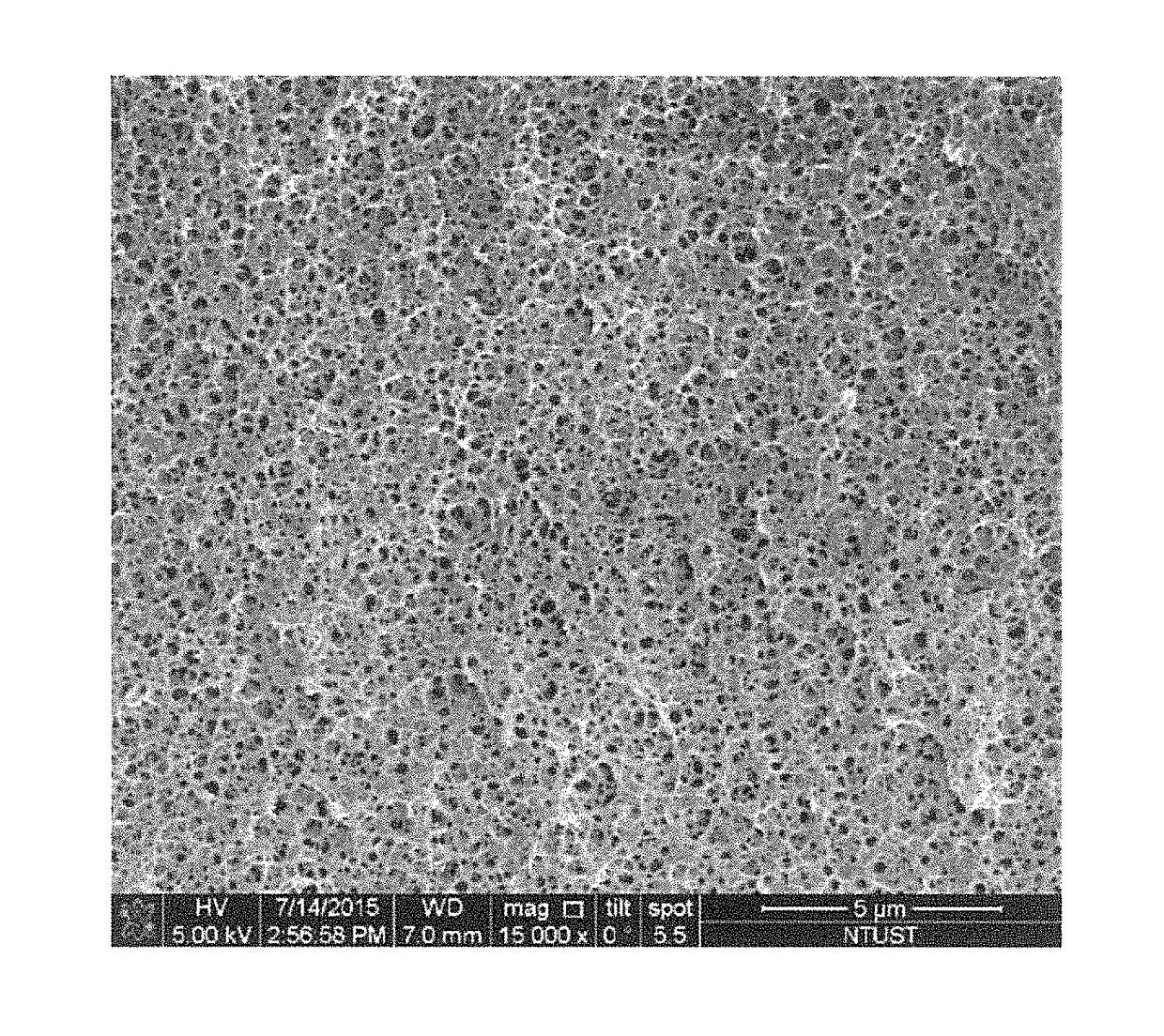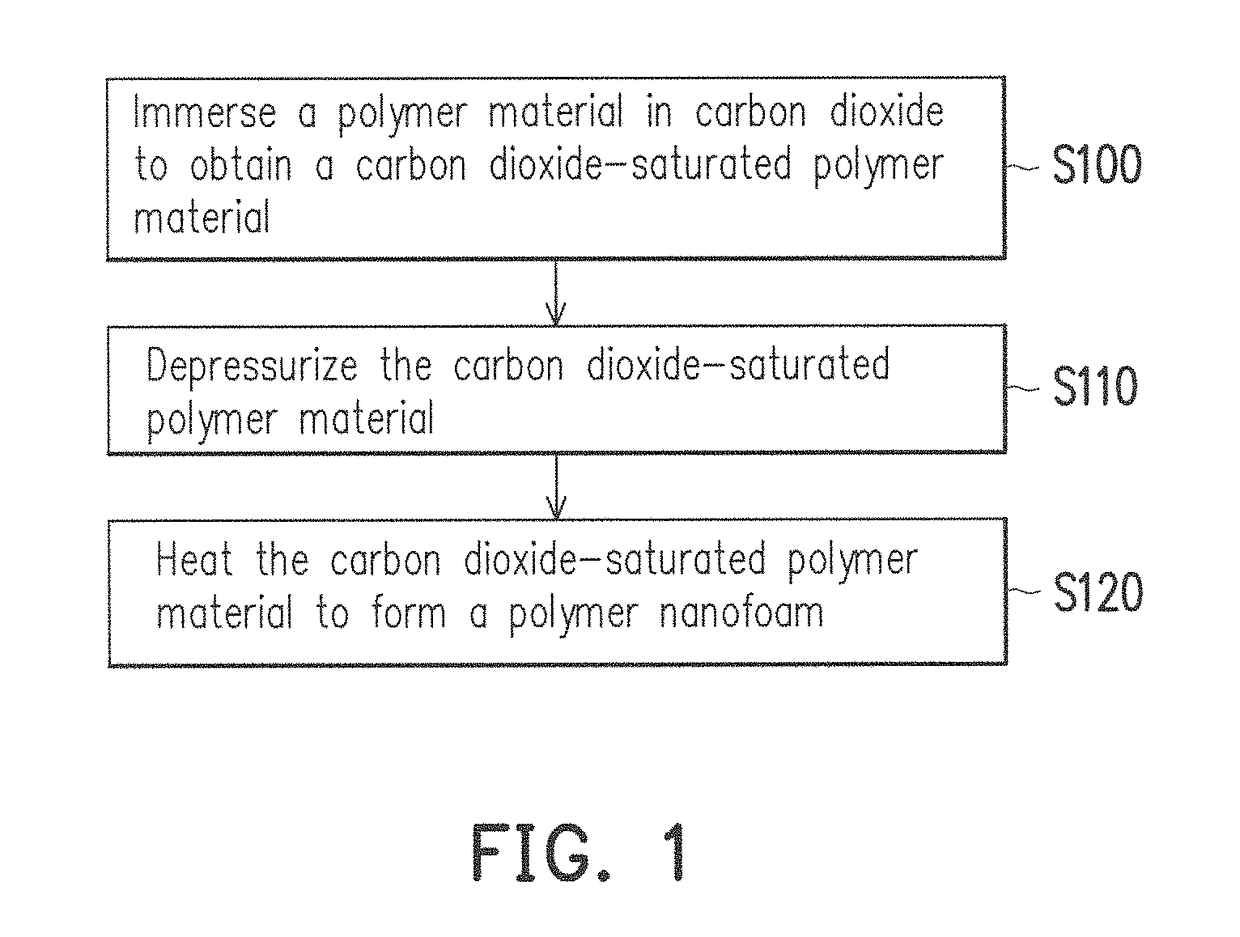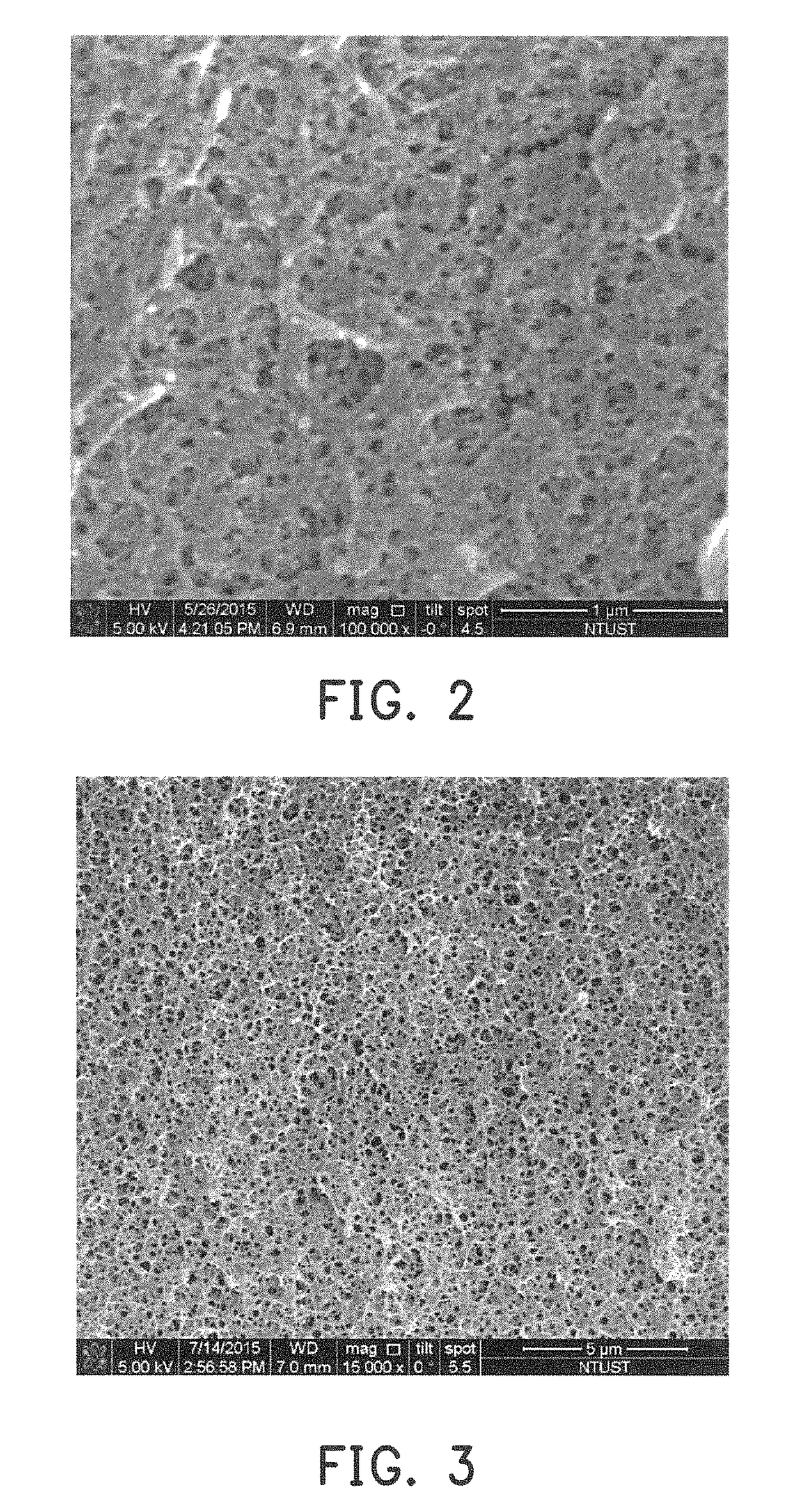Method for producing polymer nanofoam
a polymer nanofoam and nano-foam technology, applied in the direction of pipe protection, pipe protection by thermal insulation, mechanical equipment, etc., can solve the problems of nano-scale cell production and increase the cell density from micro-scale, and achieve the effect of high cell density
- Summary
- Abstract
- Description
- Claims
- Application Information
AI Technical Summary
Benefits of technology
Problems solved by technology
Method used
Image
Examples
experimental example 1
[0054]First, the polymethyl methacrylate particles were placed in an oven to dry for 8 hours to remove water. Then, the dried polymethyl methacrylate particles were placed in a high-pressure tank, and high-pressure carbon dioxide was injected. Then, polymethyl methacrylate was immersed for 24 hours at a pressure of 13.79 MPa and a temperature of 0° C. to obtain carbon dioxide-saturated polymethyl methacrylate. Detailed parameters are recited in Table 1 below.
[0055]Then, depressurization was performed until atmospheric pressure, and then the carbon dioxide-saturated polymethyl methacrylate was removed from the high-pressure tank. Then, the carbon dioxide-saturated polymethyl methacrylate was placed in a circulating thermostatic water bath and heated for 3 minutes to perform foaming. Detailed parameters are recited in Table 1 below.
[0056]Then, the polymethyl methacrylate after foaming was placed in an ice bath to cool so as to obtain a polymethyl methacrylate foam. Detailed preparatio...
experimental example 2
[0057]The polymethyl methacrylate foam was formed using a similar method to experimental example 1, and the difference thereof is only in that the temperature of immersing polymethyl methacrylate was 10° C. Detailed preparation parameters are recited in Table 1 below.
experimental example 3
[0058]The polymethyl methacrylate foam was formed using a similar method to experimental example 1, and the difference thereof is only in that the temperature of immersing polymethyl methacrylate was 20° C. Detailed preparation parameters are recited in Table 1 below.
PUM
| Property | Measurement | Unit |
|---|---|---|
| temperature | aaaaa | aaaaa |
| pressure | aaaaa | aaaaa |
| average cell size | aaaaa | aaaaa |
Abstract
Description
Claims
Application Information
 Login to View More
Login to View More - R&D
- Intellectual Property
- Life Sciences
- Materials
- Tech Scout
- Unparalleled Data Quality
- Higher Quality Content
- 60% Fewer Hallucinations
Browse by: Latest US Patents, China's latest patents, Technical Efficacy Thesaurus, Application Domain, Technology Topic, Popular Technical Reports.
© 2025 PatSnap. All rights reserved.Legal|Privacy policy|Modern Slavery Act Transparency Statement|Sitemap|About US| Contact US: help@patsnap.com



